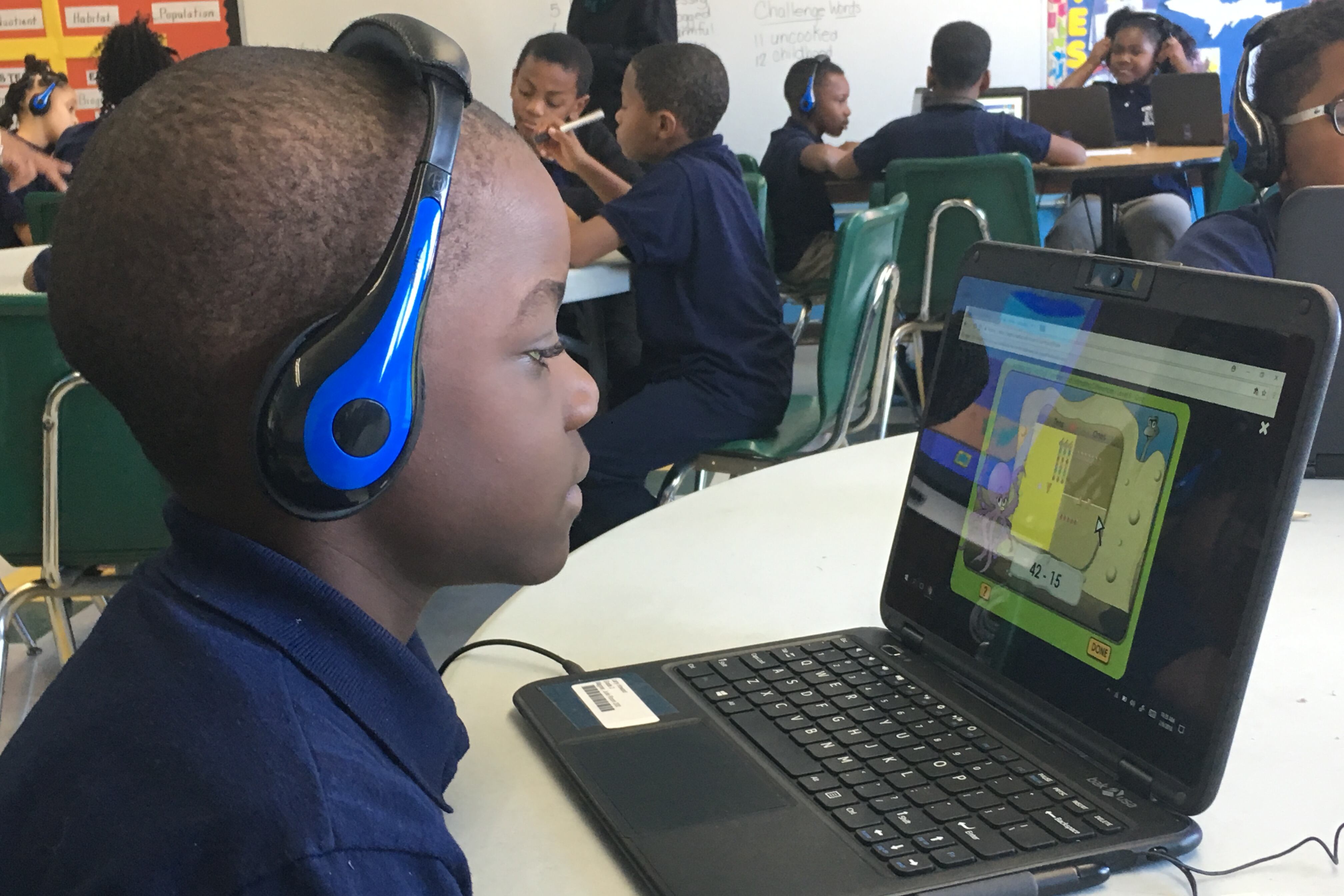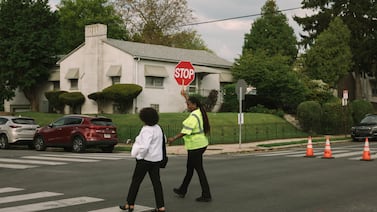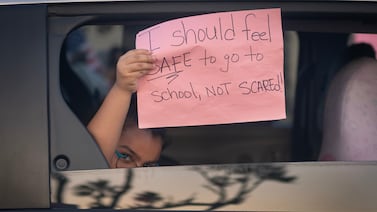Even with most back-to-school policy in Michigan still up in the air, one thing is already clear about the fall: Schools will continue the extraordinary online learning experiment that began when classrooms closed this spring.
Gov. Gretchen Whitmer hasn’t announced whether classrooms will be allowed to reopen, but districts across the state are already planning to keep classrooms closed to prevent the spread of the coronavirus. The widespread shift to virtual instruction could accelerate the state’s long-running push to offer more education online, a move with enormous but uncertain implications for students.
Five months ago, only a small fraction of Michigan’s students did much of their learning online. Now school building closures have familiarized most of those 1.6 million students with virtual instruction, and officials are investing tens of millions of dollars in technologies to make it even more widely accessible; Detroit’s school district alone has spent $23 million. Educators and online learning companies are welcoming the expansion, and some policymakers are pushing for back-to-school legislation that would open the door to even more online learning.
Yet experts estimate that at least 25% of Michigan students still don’t have the technology they need to learn online, raising questions about the equity of online learning policies. And there is scant evidence that existing online programs aid student learning.
“There are plenty of virtual learning organizations that are more than willing to provide their services, but we don’t have a lot of evidence that they have a positive effect on student learning,” said Mark Berends, a professor at University of Notre Dame who co-authored a recent study of virtual schools in Indiana.
Here are five issues to watch as this experiment with virtual learning enters a new phase.
What will districts take away from their early efforts to provide online learning?
Fewer than half of Michigan schools were able to transition to full-time online learning when classrooms shut down in March, typically because of poor broadband access. Others took hybrid approaches that combined online instruction with printed worksheets that were sent home with students. More than 10% only sent worksheets home in the spring, according to researchers at Michigan State University.
Some districts that weren’t prepared for virtual learning when the pandemic hit are gearing up for the fall by entering into contracts with online learning companies, said Joe Friedhoff, vice president of Michigan Virtual, a state-funded nonprofit that tracks virtual learning across the state, designs online lessons, and distributes them to districts for free.
If districts pay outsiders to provide online curriculum and track student learning, it could become harder for teachers to embrace virtual learning in the long run, he added, especially if the companies don’t provide training as part of their contracts.
“How are those organizations building local capacity?” asked. “There’s clearly some dependency [on contractors] that’s going to happen this year.”
Will more students get the tools they need to participate in online instruction?
Most schools in Michigan will provide some in-person instruction this fall, in part because so many students don’t have access to the devices and internet needed for online learning, said Peter Spadafore, associate executive director for advocacy at the Michigan Association of Superintendents and Administrators. (Republican lawmakers are seeking to require schools to offer in-person instruction to students in grades K-5.)
At the outset of the pandemic, the Michigan Department of Education estimated that 500,000 students, or one-third of the total, didn’t have the tools to access online classes.
The pandemic has set off a minor spending spree aimed at narrowing that gap. Philanthropies spent millions to buy tablets for students in the Detroit district. State officials are using tens of millions of dollars in federal aid to buy Wi-Fi hot spots and devices for students across the state.
Still, large parts of the state are outside the range of existing broadband internet networks.
Broadband “is a public good that needs to expand to all American households,” Spadafore said, calling on the federal government to get involved in expanding networks.
Will full-time online schools grow even faster? Or will their academic track records hold them back?
Amid uncertainty about the return to school, a growing number of parents are eyeing full-time online schools as an alternative to traditional districts.
“I can tell you right now that we have over 250 enrollment appointments scheduled,” said Kristi Teall, executive director of Success Virtual Learning Center, a full-time online school, referring to meetings with parents who’ve expressed an interest in enrolling their child. “A year ago, we would have been at zero at this point.”
Mary Moorman, head of school at Highpoint Virtual Academy, an online charter school with an enrollment of roughly 1,000, said she’d also seen a spike in interest.
“The applications year over year from last year are up well over 500%,” she said.
Some of those applications may be from nervous parents hedging their bets in case schools are closed, Moorman acknowledged. If classrooms are closed, she said, parents may prefer to send their child to a school with experience providing online education.
Yet Highpoint, like most virtual programs, produces poor academic results, receiving a D letter grade for both growth and proficiency from the state last year. Success Virtual Centers received a D for proficiency and an F for growth.
Statewide, just 8% of 11th graders enrolled in full-time online schools met the SAT standard for college readiness in math last year, far below the state average.
Moorman said the low scores are no surprise because students typically choose online learning after having trouble in a traditional school.
“They don’t go from being proficient or advanced students to, ‘oh gosh, we’re behind,’” she said. “Students are coming to us with these concerns already. Their local district has let them down.”
Researchers have struggled to paint a complete picture of students at virtual schools, but they broadly agree that the schools produce far worse academic results than other types of schools.
The Notre Dame study in Indiana found that students who transferred to fully online schools lost significant ground compared with academically similar peers who transferred to schools that operate in person.
“Students who transfer to virtual charter schools perform worse on standardized tests for at least three years after they transfer,” said Brian Fitzpatrick, a Ph.D. candidate who co-authored the study. “They move from being slightly below average to being extremely below average.”
The combination of poor academic results and low spending have drawn scrutiny from state policymakers.
Most virtual schools rank near the bottom of the state in spending per pupil. Yet, Michigan, unlike states like Indiana and Ohio, sends as much money to virtual schools as brick-and-mortar charter schools. In 2018, then-Gov. Rick Snyder, a Republican, argued that they should receive less, pointing to research showing that, on average, costs for full-time virtual schools are more than 30% lower than for brick-and-mortar schools. Whitmer, a Democrat, has also sought to reduce funding levels for virtual charters.
The state auditor is also conducting an inquiry into online charter schools, which is expected to be published this year. An audit of online charters in Indiana raised serious questions about the misspending of state funds.
Will COVID-19 budget cuts lead to more online instruction?
In May, administrators in Avondale, a school district in Detroit’s northern suburbs, announced that they would convert their alternative school to a fully online program.
The reason? To save money.
The episode touched a nerve with many educators who fear that budget cuts brought on by the pandemic will prompt more school districts to create new virtual programs — and cut teacher jobs. Since 2016, 20 new full-time virtual schools have opened in Michigan as state spending on schools has stagnated compared with inflation.
To replace its alternative program, Avondale contracted with a company that promised to increase the district’s revenue by bringing in new online students from around the state.
“The virtual academies get more students at no extra cost to the school district,” said Maria Lograsso-Gaitens, a teacher and an organizer with MiCORE, an educators coalition that opposed the closure of the alternative program in Avondale. “That’s a lot of money saved, and it’s very very appealing to save that money.”
How will politics shape virtual learning policy?
Michigan was the first in the nation to require students to have at least one online experience, which can include virtual classes, in order to graduate. The policy was created in 2005 by a Democrat-led state board of education and passed by Republican lawmakers.
Then, in 2012, the Republican-led legislature removed an enrollment cap on full-time virtual schools, setting the stage for rapid growth in the sector. The move was sharply opposed by top Democratic school officials.
That partisan split is still evident during the pandemic: Republican lawmakers are hoping to make it easier for districts to provide virtual instruction as part of proposed back-to-school legislation, but they face fierce opposition from Democrats who argue that the measures amount to “outsourcing” of teacher jobs and an “infomercial” for online learning companies.
The divide has deepened over actions by U.S. Education Secretary Betsy DeVos, who said when she joined the Trump administration that she hoped to expand the presence of virtual schools. As part of the federal coronavirus aid package, DeVos distributed $180 million in grants to states that promised to expand and improve online education.
State Rep. Pamela Hornberger, the Republican chair of the House education committee, said she was called “Pamela DeVos” by opponents of her back-to-school proposal, which would allow districts to contract out for virtual instruction one day a week after the pandemic is over.
Whitmer, who has the power to veto the proposal, said in a statement last week that it “returns to the same Betsy Devos-style tactics of outsourcing education to for-profit business models.”






